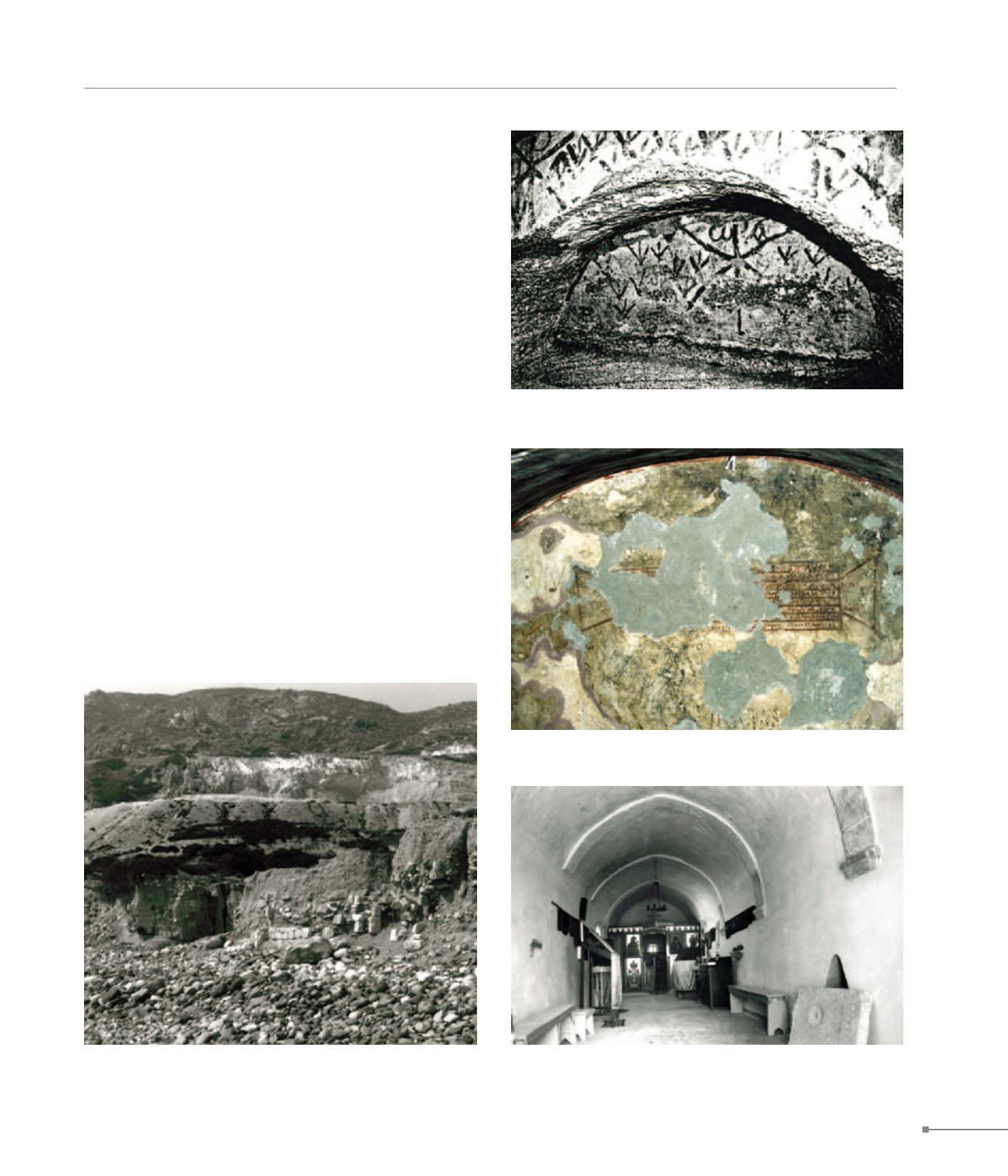
Milos.
Milos.
THE ISLANDS
361
586. Milos, Catacombs, arcosolium with inscription (Μήλος,
Κατακόμβες, αρκοσόλιο με επιγραφή)
586. Milos, Catacombs, arcosolium with wall painting (Μήλος,
Κατακόμβες, αρκοσόλιο με τοιχογραφίες)
Komia (8) dates from the 7th-9th c., a critical period for the
Aegean. There are building remains: a plethora of fragment-
ed architectural elements from Early Christian basilicas, as
well as sherds from the same era. On the uninhabited islet
in Adamas Bay, called Mikri Akradia (2), is the barrel-vaulted,
single-nave church of Panagia Akradiotissa, as well as pieces
of Early Christian marble decoration. The foundations of one
more church have also been detected, as well as architectural
remains of houses and cisterns dating from the 8th c.
There is little evidence concerning the island’s Byzantine mon-
uments. On the top of a steep hill near Zephyria is the Panagia
Kastriane church (7), with incorporated elements of sculpted
marble decoration from the Early Christian and Mid-Byzantine
period (11th c). The Phaneromene church at Treis Ekklesies
(4) seems to have been built on a Byzantine church of the
same dimensions and preserves in the conch fragments of
frescoes portraying Panagia Nikopoia (15th c.). Kastro (1) was
founded on a rocky hill above the ancient city of Milos during
the period of Latin occupation. The medieval town of Plaka
was created on the plateau below Kastro and forms a sort
of natural extension. Zephyria, also known as Palaia Chora
(6), is a medieval settlement on Milos that developed on the
plain and was, until the 17th c., the island’s capital, in place
of Plaka.
586. Milos, Zephyria, Panagia Kastriani (Μήλος, Ζεφυρία, Παναγία η
Καστριανή)
586. Milos, Kato Komia (Μήλος, Κάτω Κώμια)


